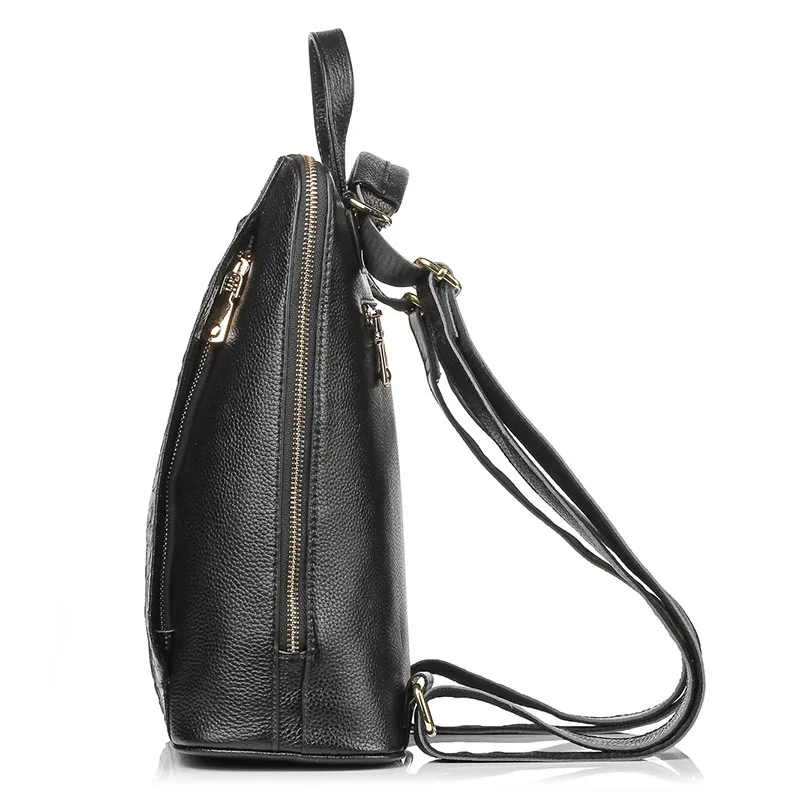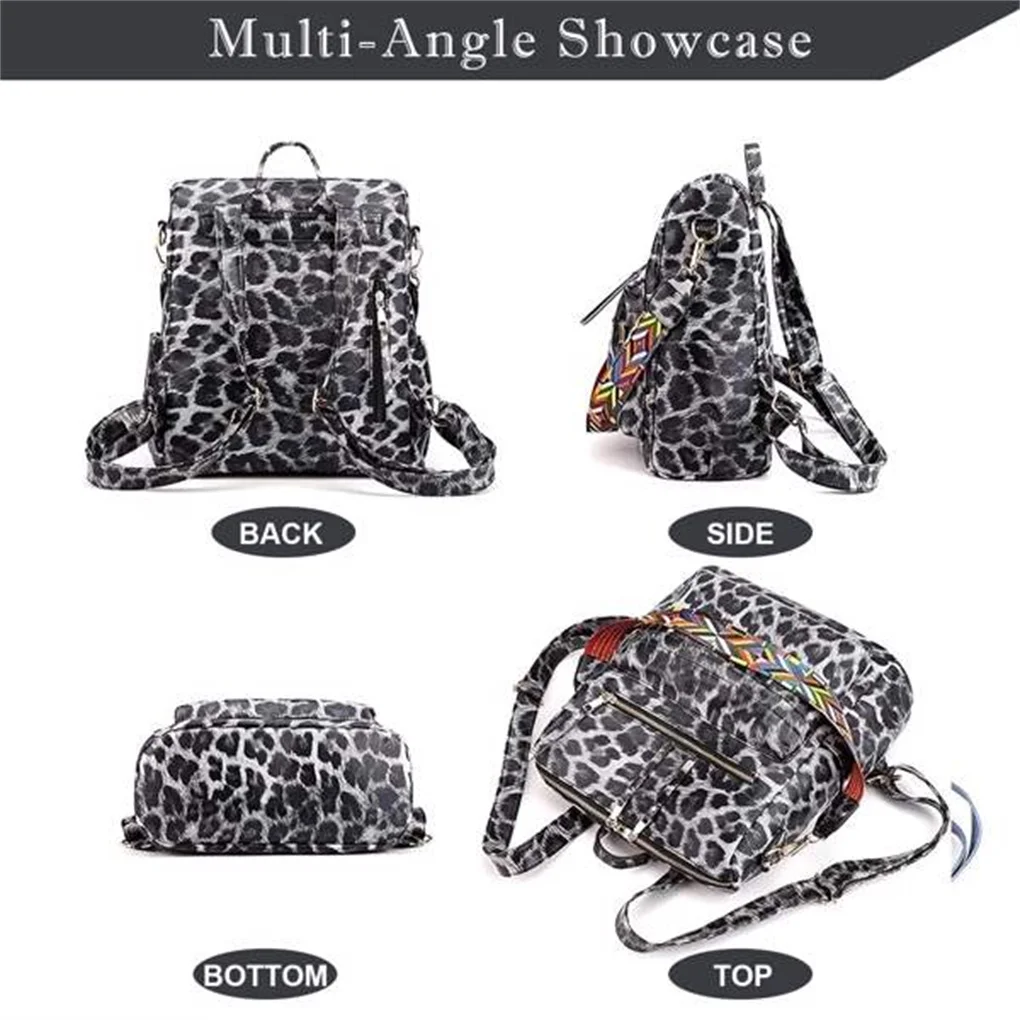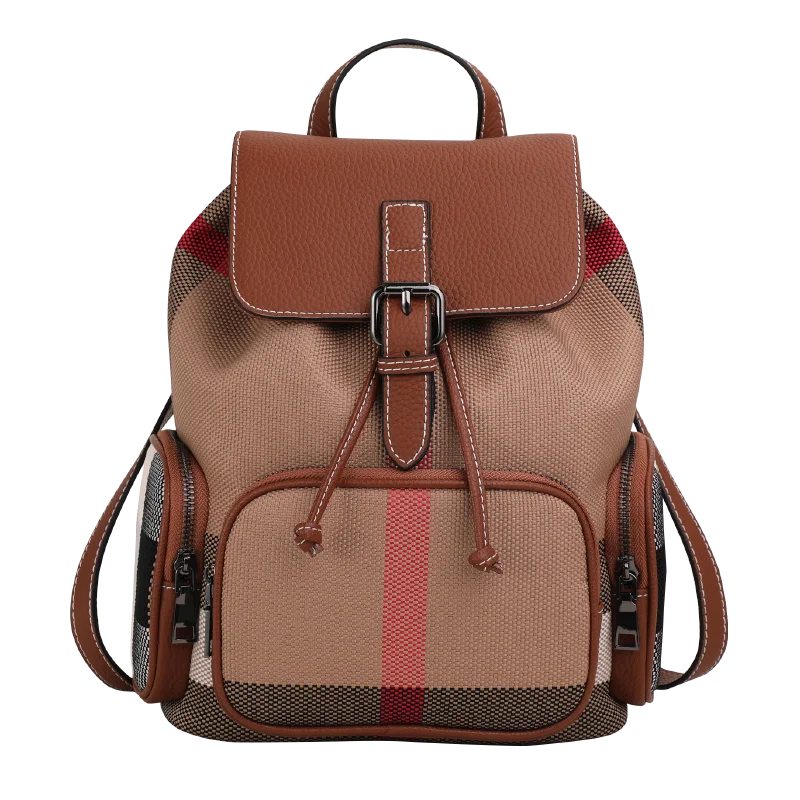Introduction to Sustainable Leather Production
Sustainable leather production encompasses practices that minimize environmental impact while upholding ethical standards throughout the entire supply chain. From sourcing raw materials to the finishing touches on a final product, sustainability in leather manufacturing aims to reduce pollution, conserve resources, and ensure fair treatment of both animals and workers.
As environmental awareness grows, so does consumer demand for responsibly produced leather goods. More shoppers are seeking products that align with their values, driving a significant shift in how leather manufacturers approach their craft. This evolution represents a move away from harmful traditional methods toward processes that respect both planet and people.
What is Sustainable Leather?
Sustainable leather refers to products created using environmentally responsible practices that minimize water usage, reduce chemical pollution, and ensure ethical treatment throughout the production process. It encompasses everything from proper animal husbandry to waste management and worker welfare.
The leather industry has historically been associated with heavy environmental impacts, using approximately 16,000-40,000 gallons of water per ton of processed hides and releasing harmful chemicals into waterways. However, innovative approaches are changing this narrative.
At Summit Carry, sustainable leather practices form the foundation of our premium backpack production. We recognize that leather conditioning and waterproofing techniques not only preserve our products but reflect our environmental values. Through this article, we’ll explore the eco-friendly tanning methods, resource conservation strategies, waste management approaches, and ethical considerations that define truly sustainable leather production.
The benefits of choosing sustainable leather backpacks extend beyond environmental impact—they result in unique, character-rich products that stand the test of time. Our full-grain leather backpack collection exemplifies this perfect balance of responsibility and quality.
The Environmental Impact of Traditional Leather Manufacturing
Traditional leather production has long carried a substantial environmental footprint. Understanding these impacts helps illuminate why sustainable alternatives have become so crucial for the industry’s future.
Chrome tanning, the most common traditional method, utilizes chromium salts that pose significant environmental hazards. When improperly managed, chromium compounds can contaminate water sources, creating health risks for surrounding communities and ecosystems. This chemical-intensive process introduces toxins that persist in the environment long after production ends.
Water usage represents another critical concern. Conventional leather manufacturing typically consumes between 16,000-40,000 gallons (60,000-150,000 liters) of water per ton of hides processed. Beyond the sheer volume, this water often becomes heavily contaminated with chemicals, salts, and organic matter, requiring extensive treatment before safe release.
The environmental challenges of traditional leather production include:
- High energy consumption resulting in substantial greenhouse gas emissions
- Chemical pollution from tanning agents, dyes, and finishing chemicals
- Solid waste generation, including untreated trimmings and sludge
- Potential for soil contamination near processing facilities
- Contributions to deforestation when leather production drives cattle ranching in sensitive areas
The carbon footprint of conventional leather is equally concerning. From raising livestock to the energy-intensive tanning and finishing processes, a single kilogram of traditionally produced leather can generate up to 110 pounds (50 kg) of CO2 equivalent emissions.
Understanding these environmental costs helps consumers appreciate the importance of eco-friendly leather certifications when selecting products. The shift toward sustainable practices isn’t simply a trend—it’s an essential evolution for the industry’s viability.
For those seeking quality without compromise, our luxury leather backpack collection demonstrates how sustainability and premium quality can coexist beautifully, proving that responsible production enhances rather than diminishes the final product.
Eco-Friendly Tanning Methods: The Foundation of Sustainable Leather
The tanning process transforms raw animal hides into durable, versatile leather—and choosing sustainable methods for this critical step establishes the foundation for truly eco-friendly leather goods.
Vegetable Tanning: Nature’s Approach
Vegetable tanning represents one of humanity’s oldest leather processing techniques, using tannins extracted from tree bark, leaves, and fruits. This method creates distinctive leather with unique characteristics:
- Natural materials include oak bark, sumac leaves, and chestnut wood
- A warm, rich patina that deepens beautifully with age and use
- Biodegradability at the end of the product’s life cycle
While vegetable tanning requires significantly more time—typically 30-60 days compared to just 1-2 days for chrome tanning—the environmental benefits justify the wait. The process produces a distinctive leather that many artisans prize for its natural appearance and ability to develop character over time.
Our vegetable-tanned leather sourcing process reflects our commitment to these time-honored techniques. The results are evident in our vintage leather backpack collection, where the natural aging process creates pieces that become more beautiful with each passing year.
Chrome-Free and Metal-Free Alternatives
Modern sustainable tanning includes innovative chrome-free and metal-free methods that address the environmental concerns of traditional processes while maintaining leather quality:
| Tanning Method | Processing Time | Environmental Impact | Characteristics |
|---|---|---|---|
| Chrome Tanning | 1-2 days | High (toxic chemicals, water pollution) | Soft, flexible, wide color range |
| Vegetable Tanning | 30-60 days | Low-moderate (natural materials) | Firm, develops patina, limited colors |
| Chrome-free | 3-10 days | Moderate (reduced toxicity) | Versatile, good durability |
| Metal-free | 7-14 days | Low (biodegradable compounds) | Soft, natural feel, good performance |
Bio-Based Innovations
The leather industry continues to advance with cutting-edge sustainable technologies:
- Probiotic biochemicals that break down proteins naturally
- Enzymatic processes that reduce chemical requirements by up to 40%
- Supercritical CO2 tanning that eliminates water usage entirely
These innovative approaches typically reduce water consumption by 30-50% compared to chrome tanning while producing minimal chemical waste. The resulting leathers maintain excellent performance characteristics while dramatically reducing environmental impact.
At Summit Carry, selecting the right tanning method involves balancing sustainability with performance requirements. Each backpack must withstand daily use while reflecting our commitment to responsible production practices.
Water and Energy Conservation Strategies
Sustainable leather production extends well beyond tanning methods to encompass comprehensive resource management strategies. Forward-thinking manufacturers have pioneered water and energy conservation approaches that dramatically reduce environmental impact.
Closed-Loop Water Systems
Innovative tanneries now implement closed-loop systems that revolutionize water usage:
- Water recycling captures and treats process water for reuse
- Advanced filtration removes contaminants without chemical treatments
- Multiple water cycles reduce freshwater consumption by 30-50%
These systems transform what was once a linear process—fresh water in, contaminated water out—into a circular system that preserves this precious resource. Some leading facilities have reduced water consumption by up to 65% through comprehensive recycling programs.
Advanced Wastewater Treatment
When water must eventually leave the production system, sustainable manufacturers ensure it causes minimal environmental harm:
- Biological treatment processes break down organic matter naturally
- Membrane filtration removes even microscopic contaminants
- Solar evaporation concentrates waste for proper disposal
Proper wastewater management ensures that surrounding ecosystems remain protected from the potential impacts of leather production.
Renewable Energy Implementation
Energy conservation represents another critical aspect of sustainable leather production:
- Solar panels powering drying and finishing equipment
- Energy recovery systems capturing heat from process water
- LED lighting and energy-efficient motors reducing electrical demands
These improvements typically yield energy consumption reductions of 25-40% compared to conventional facilities, substantially lowering the carbon footprint of leather goods.
The benefits of these conservation practices extend beyond environmental protection—they often improve leather quality by ensuring consistent processing conditions. Proper waterproofing leather bags helps extend their usable life, further enhancing sustainability through longevity.
Our leather backpacks benefit from these conscientious approaches, resulting in products that not only look beautiful but also represent responsible resource management throughout their creation.
Waste Management and Circular Economy in Leather Production
Sustainable leather production embraces circular economy principles, transforming what was once considered waste into valuable resources. This approach begins with recognizing leather itself as a byproduct of the meat industry—utilizing material that might otherwise be discarded.
Leather Waste Recycling and Upcycling
Innovative manufacturers employ several strategies to maximize material usage:
- Careful cutting patterns minimize trimmings and offcuts
- Smaller leather pieces become components for other products
- Scraps are transformed into composite materials like leatherboard
- Fine particles can be processed into fertilizer or building materials
These practices typically reduce waste by 20-30% compared to conventional manufacturing approaches.

Biological Composting
Vegetable-tanned leather offers a unique advantage at the end of its useful life—biodegradability. Unlike chrome-tanned materials, these products can be processed through industrial composting facilities, returning to the earth rather than languishing in landfills. Some manufacturers now design products specifically for disassembly, separating compostable leather from metal or synthetic components.
Innovative By-Product Applications
Forward-thinking companies find ingenious uses for secondary materials generated during leather production:
- Collagen extraction from trimmings for cosmetics or food applications
- Protein recovery for animal feed supplements
- Conversion of tannery sludge into biofuels
- Creation of biogas from organic waste
The emphasis on durability in quality leather goods represents perhaps the most significant contribution to sustainability. Products designed to last for decades—like those offered by Summit Carry—dramatically reduce the environmental impact compared to disposable alternatives requiring frequent replacement. Proper conditioning of leather backpacks further extends their useful life.
Our leather rucksack collection exemplifies this commitment to longevity, providing products that will remain functional and beautiful for years to come while minimizing waste.
Sustainable Sourcing and Traceability Systems
True sustainability begins long before the tanning process, extending all the way back to how and where leather is sourced. Transparent supply chains enable brands and consumers to verify that materials come from responsible operations.
The Importance of Supply Chain Transparency
Modern sustainable leather production embraces accountability at every stage:
- Digital tracking systems record each step from farm to finished product
- QR codes allow consumers to access origin information directly
- Third-party verification ensures claims match reality
- Documentation creates accountability throughout the supply network
These systems allow brands to verify their materials meet environmental and ethical standards while giving consumers confidence in their purchases.
Responsible Ranching Practices
Sustainable leather begins with responsible animal husbandry:
- Rotational grazing that improves soil health and carbon sequestration
- Reduced antibiotic use and hormone-free raising practices
- Protection of natural habitats and biodiversity
- Local sourcing that reduces transportation emissions
Some progressive operations implement regenerative agriculture techniques that actually improve the land through grazing, creating a net positive environmental impact rather than simply reducing harm.
Traceability Technologies
Cutting-edge technologies are revolutionizing supply chain transparency:
- Blockchain systems create tamper-proof records of each production step
- DNA testing verifies animal species and origin
- RFID tagging tracks materials through processing
- Satellite monitoring ensures responsible land management
These verification methods are particularly important for premium products, where sourcing claims directly impact value. Understanding how oiling leather affects waterproofing helps consumers properly maintain these responsibly sourced goods.
At Summit Carry, we carefully select partners who share our commitment to transparency and ethical sourcing. Our brown leather backpack collection showcases the natural beauty of responsibly sourced materials, demonstrating that sustainability and quality are complementary rather than competing values.
Ethical Considerations: Animal Welfare and Fair Labor Practices
Sustainable leather production extends beyond environmental concerns to address critical ethical dimensions. True sustainability must encompass both animal welfare and human labor conditions to create truly responsible products.
Animal Welfare Standards
Ethical leather sourcing adheres to established animal welfare frameworks:
- The Five Freedoms model ensures animals are free from hunger, discomfort, pain, fear, and able to express normal behaviors
- Regular third-party auditing verifies compliance with welfare standards
- Humane transport and handling practices minimize stress
- Documentation requirements create accountability throughout the supply chain
These standards recognize that ethical production begins with respectful treatment of the animals providing the raw materials.
Fair Labor Practices
Sustainable leather production must also ensure safe and fair conditions for workers:
- Proper safety equipment and training for handling chemicals
- Fair wages that support decent living standards
- Reasonable working hours and appropriate breaks
- Freedom of association and collective bargaining rights
Many sustainable tanneries have reduced workplace hazards by 40-60% through improved processes and safety measures, demonstrating that better environmental practices often correlate with improved worker conditions.

The ethical dimension of leather production directly impacts product quality. Animals raised in low-stress environments typically produce superior hides, while skilled workers operating in safe conditions create better finished products. This connection between ethics and quality becomes evident in how full-grain leather develops patina over time, revealing the inherent beauty of properly sourced materials.
Our men’s leather backpack collection exemplifies this harmonious relationship between ethical sourcing and exceptional quality. Each piece tells a story of responsible production that respects both natural resources and the people who transform them into lasting goods.
Innovative Alternatives to Traditional Leather
While sustainable leather production focuses on improving traditional processes, the industry also continues to develop innovative alternatives that offer different environmental and ethical profiles.
Plant-Based Leather Alternatives
Several plant-derived materials now provide leather-like characteristics:
- Piñatex: Created from pineapple leaf fibers, this material utilizes agricultural waste that would otherwise be discarded
- Mycelium leather: Grown from mushroom root structures, this material can be cultivated with minimal resources
- Cactus leather: Derived from nopal cactus plants, offering a sustainable option that requires little water
- Apple leather: Utilizes waste from apple juice production, creating purpose for materials that would otherwise be discarded
These materials typically use 95% less water and produce 90% fewer carbon emissions than conventional leather production. However, many still incorporate some synthetic materials for durability and water resistance.
Lab-Grown Cultured Leather
Biotechnology companies have developed methods to grow genuine leather without animals:
- Cell cultivation creates actual collagen protein structures
- Biofabrication eliminates the need for raising and slaughtering animals
- Customization opportunities allow for specific performance characteristics
- Reduced environmental footprint compared to traditional leather
While promising, these technologies remain in relatively early development stages and currently come with high production costs.
Recycled and Upcycled Leather
Repurposing existing leather presents another sustainable approach:
- Bonded leather combines scraps with binding agents for new materials
- Upcycling transforms discarded leather goods into new products
- Recovered leather from automotive and furniture industries finds new applications
Each alternative offers distinct advantages and limitations in terms of durability, performance, and environmental impact. While many provide significant sustainability benefits, they may not match the longevity of high-quality traditional leather—an important consideration when evaluating overall environmental impact.
Proper leather care for travel backpacks remains essential regardless of material choice, as product longevity represents a critical component of true sustainability.
Our women’s leather backpack collection showcases how thoughtfully selected materials can combine sustainability with exceptional function and style.
Certifications and Standards in Sustainable Leather
With growing consumer interest in sustainable products, third-party certifications provide valuable verification of environmental and ethical claims. These standards help distinguish genuine sustainable practices from superficial “greenwashing.”
The Leather Working Group (LWG)
The LWG has established the industry’s most comprehensive environmental certification program:
- Medal ratings (Gold, Silver, Bronze) based on environmental performance
- Audits covering water usage, energy consumption, and waste management
- Chemical management protocols ensuring responsible handling
- Traceability components tracking material origins
LWG-certified tanneries typically use 35% less water and 48% less energy than non-certified facilities, demonstrating the program’s significant impact.
Additional Relevant Certifications
Several other certifications address specific aspects of sustainable leather:
| Certification | Focus | Key Requirements |
|---|---|---|
| Global Organic Textile Standard (GOTS) | Organic materials | Restricted chemical inputs, ecological processing |
| ICEC Traceability | Supply chain | Verified material tracking from origin to finished product |
| Sustainable Leather Foundation (SLF) | Comprehensive | Environmental, social, and governance criteria |
| Oeko-Tex Leather Standard | Chemical safety | Testing for harmful substances and residues |

These certification programs provide manufacturers with clear guidelines for improvement while helping consumers identify products that align with their values. Look for certification logos and details about specific environmental programs when shopping for leather goods.
Understanding certifications complements knowledge about proper leather maintenance for commuters, ensuring that sustainable products receive appropriate care to maximize their useful lifespan.
Our leather travel backpacks meet rigorous standards for both environmental responsibility and performance, demonstrating that certified sustainable leather can excel in even demanding applications.
How to Identify and Choose Sustainable Leather Products
Armed with knowledge about sustainable leather production, consumers can make informed choices that align with their values and environmental concerns. Here’s how to identify truly sustainable leather products:
Key Indicators of Sustainable Leather
When shopping for leather goods, look for these positive signs:
- Recognized certification logos (LWG, GOTS, SLF)
- Transparent information about material sourcing
- Details about the tanning process used
- Commitment to product longevity and repair services
- Natural variations indicating minimal chemical processing
Be wary of vague claims like “eco-friendly” or “green” without specific details or certifications to back them up. True sustainability can be verified through clear information about actual practices.
Distinguishing Genuine Sustainability from Greenwashing
As consumer interest in sustainable products grows, so does the temptation for companies to exaggerate environmental credentials:
- Seek specific information rather than generic eco-claims
- Look for details about actual processes and materials
- Verify certifications through official certification websites
- Question unusually low prices for supposedly sustainable products
- Research brand commitment to sustainability beyond marketing materials
14 Inch Leather Laptop Backpack, Brown Leather Backpack, Men's Leather Backpack, Vintage Leather Backpack
Price range: $177.28 through $199.12 Select options This product has multiple variants. The options may be chosen on the product pageCarry On Leather Backpack, Roll Top Leather Backpack
Price range: $77.76 through $96.48 Select options This product has multiple variants. The options may be chosen on the product pageDesigner Mini Backpack, Mini Leather Backpack, Small Leather Sling Backpack, Women's Leather Backpack
Price range: $95.76 through $98.80 Select options This product has multiple variants. The options may be chosen on the product pageDesigner Mini Backpack, Designer Women's Backpack, Mini Leather Backpack, Women's Leather Backpack
Price range: $135.92 through $137.64 Select options This product has multiple variants. The options may be chosen on the product page17 Inch Leather Laptop Backpack, Men's Leather Travel Backpack, Men's Leather Work Backpack
Price range: $106.28 through $143.88 Select options This product has multiple variants. The options may be chosen on the product pageBlack Leather Backpack, Small Leather Backpack, Women's Leather Backpack
Price range: $112.96 through $116.12 Select options This product has multiple variants. The options may be chosen on the product page
Quality sustainable leather products often represent better environmental value than cheaper alternatives. While the initial cost may be higher, small leather backpacks made with sustainable practices will typically last many years longer than mass-produced alternatives, resulting in lower cost-per-use and reduced overall consumption.
Understanding when leather should dry before conditioning helps extend the life of sustainable leather products, further enhancing their environmental benefits through longevity.
FAQs: Common Questions About Sustainable Leather Production
Is leather inherently sustainable or unsustainable?
Leather exists in a unique position as a byproduct of the meat industry, potentially preventing waste. However, its sustainability depends entirely on how it’s processed. Traditional leather production can be highly polluting, while sustainable methods dramatically reduce environmental impact. The most sustainable approach utilizes hides that would otherwise go to waste and processes them using low-impact methods.
How does vegetable-tanned leather differ in appearance and performance?
Vegetable-tanned leather typically has a firmer feel and warmer color than chrome-tanned alternatives. It develops a beautiful patina over time, darkening and developing character with use. While it may be less water-resistant initially, it can achieve excellent performance with proper treatment. Vegetable-tanned leather also ages gracefully, often looking better after years of use than when new.
Are vegan leathers always more environmentally friendly?
Not necessarily. While some plant-based leathers offer environmental benefits, many vegan alternatives rely heavily on petroleum-based plastics that won’t biodegrade and may release microplastics. The most sustainable choice depends on many factors including production methods, expected lifespan, and end-of-life considerations. Well-produced traditional leather that lasts for decades may have less environmental impact than synthetic alternatives requiring frequent replacement.
How can I extend the life of my leather goods?
Regular care significantly extends leather product lifespan. Keep leather items clean, condition them appropriately for their specific type, protect them from extreme temperatures and direct sunlight, and address minor damage promptly. Store items properly when not in use, using dust bags for protection. Quality leather goods can last decades with proper care.
What makes full-grain leather more sustainable than other grades?
Full-grain leather undergoes minimal processing, using the entire top layer of the hide without sanding or correcting imperfections. This reduces chemical usage and preserves the material’s natural strength, resulting in products that typically last many years longer than those made with corrected or split leathers. The exceptional durability of full-grain leather makes it a more sustainable choice despite its higher initial cost.
Future Innovations in Sustainable Leather Manufacturing
The leather industry continues to evolve, with promising innovations pointing toward an even more sustainable future. These developments balance traditional craftsmanship with cutting-edge technology to create better environmental outcomes.
Emerging Technologies
Several technological advances are transforming sustainable leather production:
- Bioengineered enzymes that replace harsh chemicals in processing
- AI-driven cutting systems that maximize material usage and minimize waste
- Water purification systems capable of removing even pharmaceutical residues
- Biodegradable finishing compounds that eliminate environmental persistence
These innovations typically reduce resource consumption by 40-60% compared to conventional methods while maintaining or improving leather quality.
Industry Collaboration Initiatives
Sustainability advances more rapidly when companies work together:
- Shared research on environmental improvements
- Industry-wide standards for chemical management
- Cooperative traceability systems spanning multiple suppliers
- Collective targets for carbon reduction and water conservation
These collaborative efforts help establish new best practices that elevate the entire industry rather than creating competitive advantages for individual companies.
Balancing Tradition and Innovation
The most successful sustainable leather production combines time-tested techniques with modern advances:
- Traditional craftsmanship ensuring durable construction
- Modern efficiency measures reducing resource consumption
- Heritage techniques like vegetable tanning reimagined with contemporary precision
- Timeless designs that transcend fashion cycles for longer product relevance
This balanced approach respects leather’s rich cultural heritage while acknowledging the need for environmental progress. By combining the best of both worlds, manufacturers create products that honor tradition while embracing innovation.
Summit Carry remains committed to incorporating these advances as they emerge, continually improving our environmental performance while maintaining the exceptional quality our customers expect. The future of leather production lies in this thoughtful integration of sustainability and craftsmanship—creating products that are better for both people and planet.







